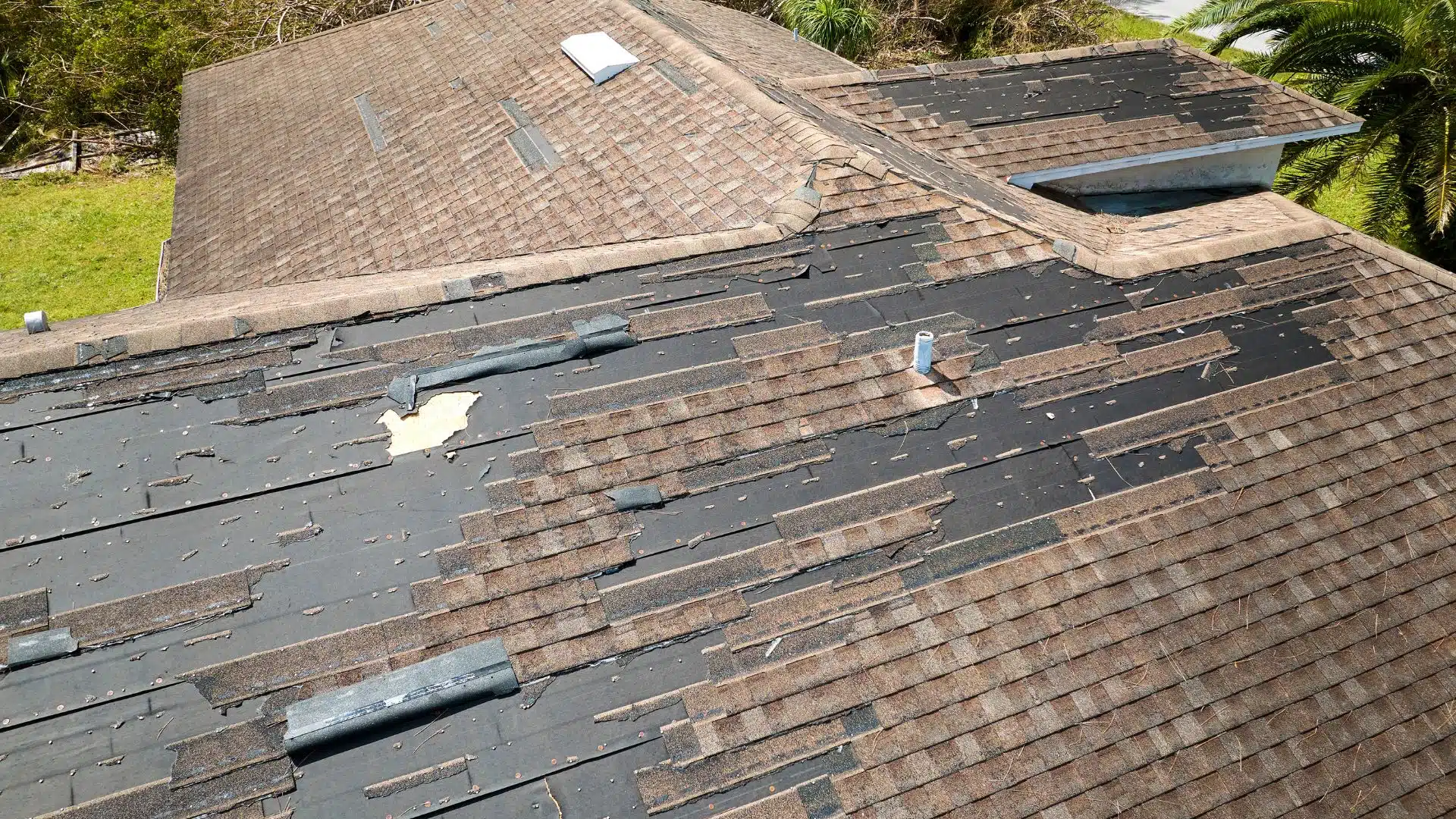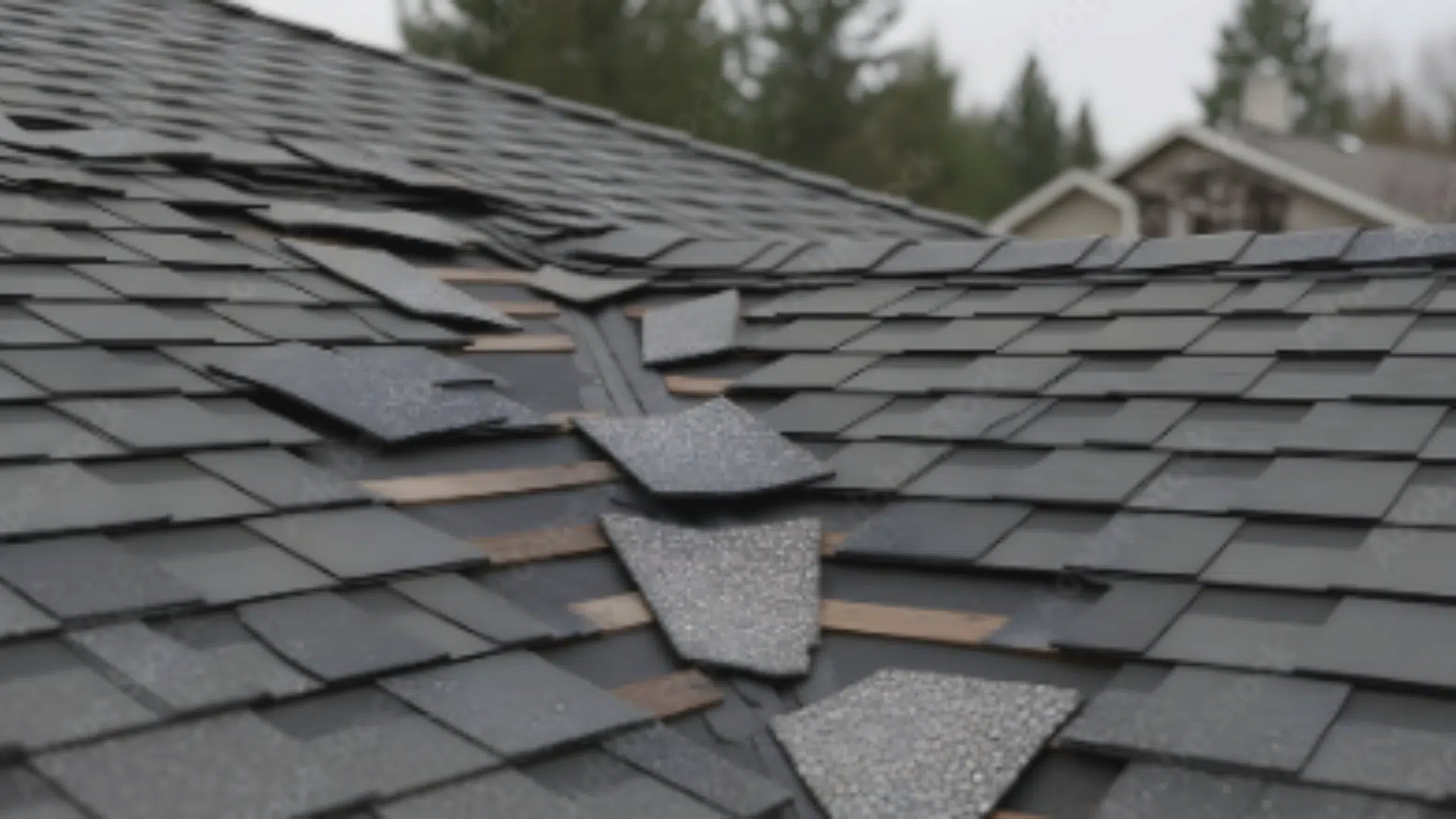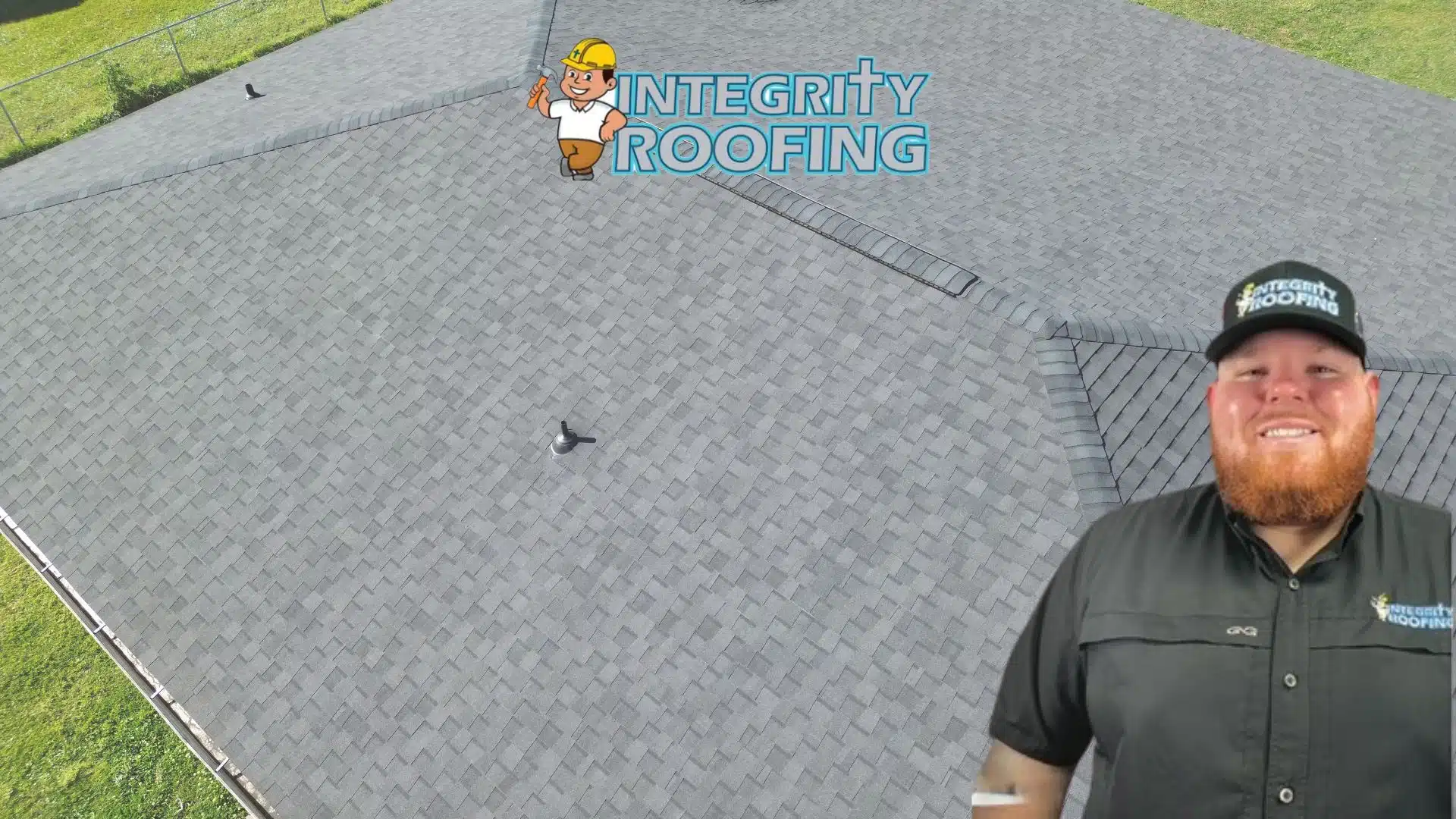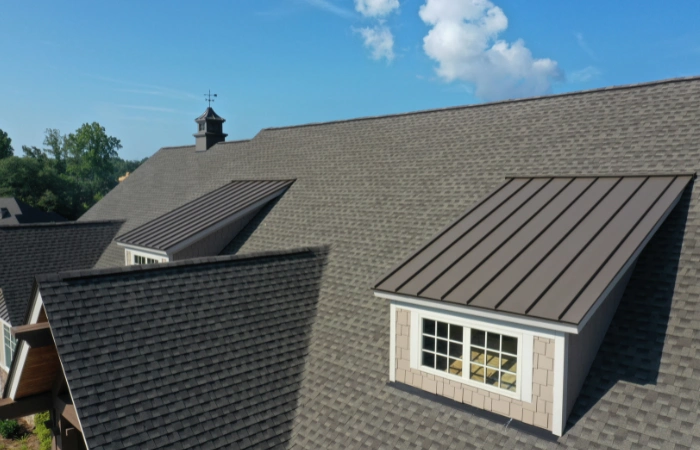How Hurricanes Impact Roofs and the Importance of Preparation
Hurricanes are among nature’s most destructive forces, and their effects on residential and commercial roofs can be catastrophic. These powerful storms bring with them high winds, torrential rain, flying debris, and sometimes hail—each of which can severely damage your roof. Understanding how hurricanes affect your roof is essential to preparing for the worst and minimizing damage to your home or business.
When a hurricane strikes, it doesn’t just damage the exterior of your property—it can compromise the very structure of your roof, leaving your home vulnerable to leaks, water intrusion, and even complete structural failure. Wind, rain, debris, and hail all play a part in causing damage, often resulting in a costly repair or even a full roof replacement. It’s not just about the immediate aftermath; many forms of roof damage aren’t visible at first but can lead to serious problems over time, such as mold growth, wood rot, or insulation damage.
For homeowners and business owners in hurricane-prone areas, it is crucial to understand these impacts and take preventative measures to protect their roofs. Being proactive with roof maintenance, installing hurricane-resistant materials, and knowing the signs of potential damage can make all the difference in avoiding long-term issues and costly repairs. At Integrity Roofing we are to familiar with hurricanes. As your local roofer we can help you get your roof ready for hurricane season before it gets here.
Wind Damage: The Role of High Winds in Roof Destruction
Hurricane winds are one of the most damaging elements of a storm. The strength of these winds can range from Category 1 hurricanes (with winds starting at 74 mph) to the catastrophic force of a Category 5 hurricane, which can have winds exceeding 157 mph. At these extreme speeds, the impact on roofs can be devastating.
How Hurricane Winds Cause Roof Damage
As hurricane winds reach speeds of over 74 mph, they can rip, tear, and displace roofing materials, leading to significant damage. Here are some of the primary ways these high winds affect your roof:
- Loose Shingles and Missing Tiles: High winds can easily lift shingles or tiles, causing them to become loose or even tear off entirely. When this happens, the roof’s underlayment and deck are exposed, leaving your property vulnerable to water intrusion.
- Torn Metal Panels: For roofs with metal panels, the intense winds can cause them to buckle, tear, or even detach completely. This exposes the underlying structure to the elements, allowing water to seep into the roof deck.
- Roof Deck Exposure: In severe storms, especially those in Category 3 or higher, entire sections of the roof deck can be torn away, completely compromising the roof’s integrity. This can leave the interior of your home or business exposed to the storm’s rain and wind, resulting in devastating water damage and potentially structural collapse.
Vulnerabilities of Older or Poorly Installed Roofs
Older roofs or roofs that were poorly installed are particularly vulnerable during a hurricane. Over time, roofing materials can degrade, losing their ability to resist high winds. Additionally, improperly fastened shingles or poorly sealed flashing can be ripped away more easily. Homeowners with older roofs or those with previous roofing issues should take extra precautions to reinforce their roofs with a fortified roof ahead of the storm season.
The Hidden Dangers: How Wind Damage May Not Always Be Visible at First
Not all wind damage is immediately visible. Shingles or tiles may appear to have settled back into place after being lifted by wind, leaving no obvious signs of damage. However, even small areas of wind damage can cause significant problems in the long run. A loose shingle or cracked tile can allow moisture to seep into the roof structure, leading to leaks, water damage, and mold growth over time.
Severity of Wind Damage in Higher Categories (Category 3+ Causing Roof Deck Removal)
When a hurricane reaches Category 3 or higher, the wind speeds are powerful enough to cause catastrophic damage to roofs. At these higher levels, entire roof sections or even the entire roof structure may be torn off. In such cases, the damage is typically so severe that it may require a full roof replacement. Even if the roof appears to remain intact in lower-category hurricanes, the cumulative stress over time can lead to deterioration, especially if repairs are not made promptly.
Wind damage is one of the most insidious types of roof damage because it often starts small, but without the proper attention and repair, it can lead to significant long-term issues. That’s why it is crucial to have your roof inspected after any hurricane, regardless of its category.
Water Intrusion and Leaks: How Heavy Rain During Hurricanes Affects Roofs
Heavy rain is a common companion of hurricanes, and it can wreak havoc on your roof if it’s not properly prepared to withstand it. Wind-driven rain, in particular, can take a toll on roofing materials, pushing water into areas that would otherwise be protected. Even minor vulnerabilities in your roof can lead to significant water intrusion, causing damage to the structure of your home or business.
The Role of Wind-Driven Rain in Exploiting Roof Vulnerabilities
Wind-driven rain can penetrate even the smallest gaps or cracks in roofing materials. This rain is often forced under shingles, tiles, or flashing, where it can infiltrate the roof structure. Once water has entered the roofing system, it can spread quickly, damaging insulation, wood framing, and ceilings. The power of hurricane winds increases the amount of water that is driven into vulnerable parts of the roof, causing potential leaks even in areas that may seem secure during lighter storms.
Even Minor Damage Can Lead to Significant Water Intrusion
Even a small issue like a cracked or missing shingle, a loose tile, or improperly sealed flashing can be enough to allow water to seep into the roof structure during a hurricane. While these issues may seem minor at first, the amount of water driven by hurricane-force winds can easily exploit these small vulnerabilities. Once water infiltrates your roof, it can travel along the underlayment and into your home, leading to leaks in the ceilings and walls.
Long-Term Effects of Leaks: Mold Growth, Insulation Damage, Structural Concerns
The damage caused by water intrusion doesn’t always stop with immediate leaks. If water is allowed to seep into the roof structure, it can lead to long-term issues such as:
- Mold Growth: Prolonged exposure to moisture creates an ideal environment for mold and mildew to thrive, potentially causing health issues and more extensive damage to materials.
- Insulation Damage: Wet insulation loses its ability to retain heat and cold, making it inefficient and costly. Damaged insulation also promotes mold growth.
- Structural Concerns: If water continues to seep into the roof framing and other structural components, it can weaken the overall integrity of the building. Rotting wood or rusted metal can cause structural instability over time.
Importance of Checking for Leaks Even if No Obvious Damage Is Visible
It’s essential to check for leaks after every hurricane, even if no obvious roof damage is visible. Small, hidden leaks may not show up immediately but can lead to significant water damage over time. Water may begin to seep through unnoticed areas and cause hidden damage within the roof structure, walls, or ceilings. This is why thorough roof inspections in Gulfport MS are crucial after a storm, even if the roof appears to be intact on the surface.
Damage from Debris: How Flying Debris from Hurricanes Can Puncture Roofs
Hurricanes are notorious for sending debris flying at high speeds, which can severely damage your roof. Whether it’s tree branches, furniture, or other outdoor items, debris can be propelled by the high winds and create holes or cracks in your roofing materials. The impact of these objects, combined with the heavy winds, poses a serious risk to the integrity of your roof.
Explanation of Debris: Tree Branches, Furniture, Etc.
During a hurricane, nearly anything not secured to the ground can become airborne. Tree branches, patio furniture, garbage cans, and even large objects like fences or parts of nearby buildings can be hurled toward your roof with tremendous force. These objects can strike your roof with enough power to puncture roofing materials, break tiles, or even damage ventilation systems like vents or skylights.
The Impact of Debris on Roofing Materials: Punctures, Cracks, Damage to Vents/Skylights
When debris strikes a roof, it can cause immediate damage. For example:
- Punctures: Tree branches or larger pieces of debris can puncture asphalt shingles, metal panels, or even concrete tiles, leaving holes that expose the roof structure to water and other elements.
- Cracks: Smaller debris or high winds can cause cracks in tiles, weakening the protective layer and making it more vulnerable to further damage.
- Vents/Skylights: Rooftop installations like vents and skylights are particularly susceptible to flying debris. If these are damaged, it increases the risk of water intrusion, as these are critical points for ventilation and light.
Risk of Increased Water Infiltration After Debris Impact
Once debris has punctured or cracked roofing materials, it creates entry points for water. Heavy rain from the hurricane, driven by the wind, can easily flow through these openings, causing leaks inside the building. The increased vulnerability to water infiltration makes it essential to inspect the roof for damage after the storm to prevent further issues.
How Debris Can Cause Long-Term Damage Even if Not Immediately Noticeable
While debris may leave visible damage such as holes or cracks, it can also cause hidden damage that worsens over time. Small punctures or cracks can go unnoticed for a while, but if they aren’t addressed, they can gradually allow water to seep in and cause larger-scale damage. Debris can also shift roofing materials slightly, causing them to become misaligned or loose, further weakening the roof’s overall integrity.
Hail Damage: Hailstorms as Part of Some Hurricanes
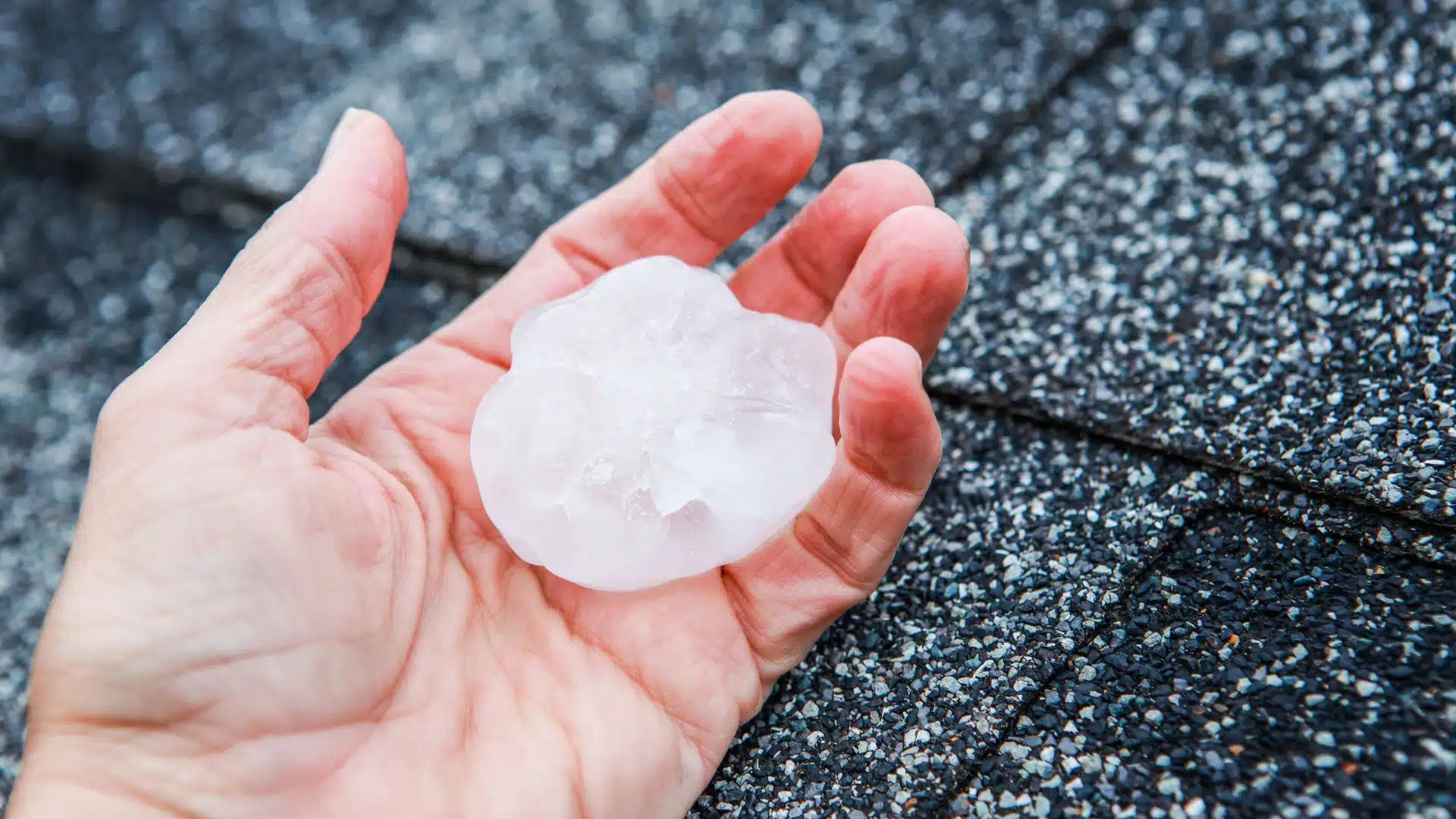
In addition to wind and rain, some hurricanes also bring hail, which can significantly impact roofing materials. While hail may seem like a minor concern compared to the force of winds, its effect on roofing systems can be considerable, especially when the hail is large or impacts at high speeds.
Hail’s Effect on Roofing Materials Like Asphalt Shingles and Tiles
Hailstones can vary in size, but larger hailstones—especially those that fall at speeds of over 70 mph—can cause significant damage to roofing materials. For example:
- Asphalt Shingles: Hail can cause dents, cracks, and even punctures in asphalt shingles, weakening the roof’s protective barrier and increasing the risk of leaks.
- Tiles: Hailstones can also crack or shatter roofing tiles, which compromises the roof’s ability to protect the structure from the elements.
The Weakening of the Roof’s Protective Barrier After Hail Impacts
Once hail has struck the roof, it can significantly weaken the roofing material’s protective properties. Even small, seemingly insignificant dents or cracks can expose the underlayment of the roof to the elements. Over time, this deterioration can lead to more extensive damage as water can seep through the damaged areas and compromise the interior of the building.
How Hail Damage Can Lead to Deterioration and Further Vulnerability to Leaks
Hail damage can often go unnoticed immediately after a storm, as the damage may be subtle or concentrated in certain areas of the roof. However, this weakened roof surface is much more susceptible to future damage. Even light rain or subsequent storms can lead to leaks, and the ongoing deterioration can eventually result in more costly repairs, such as a full roof replacement.
By addressing hail damage early—before the roof further deteriorates—you can protect your home or business from additional costs and minimize the risk of leaks and long-term structural damage.
The Importance of Post-Hurricane Roof Inspections: Why You Should Inspect Your Roof After Every Hurricane
After a hurricane, the damage to your roof may not always be immediately obvious. While major issues like missing shingles or a collapsed roof are easy to spot, there are often hidden damages that can lead to severe problems down the line if not addressed quickly. That’s why scheduling a post-hurricane roof inspection is essential for ensuring the long-term integrity of your home or business.
The Risk of Overlooked Damage: Why Even Minor Issues Should Be Addressed Quickly
It’s easy to assume that if your roof looks intact after a hurricane, everything is fine. However, even the smallest damage can lead to larger issues if left unaddressed. Small punctures, loose shingles, or cracks in roofing materials may not cause immediate leaks, but they can allow moisture to infiltrate the roof structure over time. As the damage worsens, it can lead to mold growth, water damage, and even structural weakening, all of which can result in costly repairs or replacements.
How to Spot Hidden Damage and the Role of Professional Inspections
While you may be able to spot obvious signs of damage like missing shingles or dents, hidden damage can be trickier to identify. A professional roofing inspector in Gulfport MS can help you spot problems that aren’t immediately visible, such as:
- Lifted Shingles: Wind may lift shingles, causing them to settle back into place without showing obvious signs of damage. A professional can spot these areas where the roof’s protective layer has been compromised.
- Leaks in Hidden Areas: Water may infiltrate your roof through cracks or punctures that aren’t immediately visible but can lead to leaks inside your home or business.
- Structural Issues: A professional inspection can also identify any underlying structural damage, such as weakened roof supports, that may not be apparent to the untrained eye.
By having a professional inspect your roof, you ensure that any hidden damage is discovered and addressed promptly, helping prevent further deterioration and costly repairs.
Common Issues That May Arise Post-Storm: Shingles Out of Place, Punctures, and Leaks
After a hurricane, some common roof issues that often arise include:
- Shingles Out of Place: High winds can lift shingles or even blow them off completely. This leaves the roof vulnerable to water intrusion, and even if the shingles seem to settle back into place, the damage may still be significant.
- Punctures: Debris such as tree branches or flying furniture can puncture the roof, leaving holes or cracks in the materials.
- Leaks: Even minor cracks or shifts in roofing materials can lead to leaks, which may not become visible until later but can cause significant damage to your home’s interior.
The Importance of Acting Early to Prevent Larger, Costlier Problems Later
The sooner you identify and address roof damage, the less likely it is that the damage will spread or cause further issues. Acting quickly can prevent secondary problems like water damage, mold growth, or rot that could lead to costly repairs or even a full roof replacement. Roof inspections and repairs right after a hurricane can help you minimize these risks and keep your roof functioning properly for years to come.
Conclusion: Protecting Your Roof After a Hurricane
Hurricanes pose a significant threat to the integrity of your roof, with their powerful winds, torrential rain, flying debris, and even hail causing a range of potential damages. From minor issues like cracked shingles to more severe damage such as complete roof deck exposure, the aftermath of a hurricane can be costly and complicated if not addressed promptly. The importance of post-hurricane roof inspections cannot be overstated, as even minor damage left unchecked can lead to long-term problems like leaks, mold growth, and structural decay.
Understanding the potential costs of repairs is crucial for homeowners and business owners in hurricane-prone areas. Whether it’s a minor patch-up or an extensive roof replacement, acting early can save you from facing even more significant, more expensive issues down the road. A timely, thorough roof inspection after a hurricane can uncover hidden damage, ensuring your roof continues to protect your home and loved ones from the elements.
Ultimately, the key to minimizing hurricane-related roof damage is preparation, vigilance, and prompt action. By investing in proper roof maintenance Gulfport MS, taking steps to reinforce vulnerable areas, and having a professional inspection after every storm, you can safeguard your property and avoid costly repairs in the future. Remember, the sooner you address damage, the less likely it is that your roof will suffer from further deterioration, keeping your home safe and secure for years to come.
FAQ: How Hurricanes Affect Your Roof
1. How can hurricanes damage my roof?
Hurricanes can cause significant damage through high winds, heavy rain, flying debris, and even hail. Winds can lift or tear off shingles, tiles, or metal panels, exposing the roof deck to water. Flying debris can puncture roofing materials, and heavy rain can lead to water intrusion and leaks. Hail can also weaken the roof’s protective barrier, increasing the risk of leaks and deterioration.
2. Should I inspect my roof after every hurricane?
Yes, it’s crucial to inspect your roof after every hurricane, even if there are no obvious signs of damage. Minor issues, like lifted shingles or small punctures, can go unnoticed but may lead to significant problems like leaks, mold growth, or structural weakening over time. A professional inspection can identify hidden damage before it worsens.
3. What are the most common types of roof damage after a hurricane?
The most common types of roof damage after a hurricane include missing or damaged shingles, punctures from flying debris, cracks or breaks in roofing materials, and leaks. Structural damage to the roof deck and issues with rooftop installations like vents or skylights can also occur.
4. How much does it cost to repair roof damage caused by a hurricane?
Repair costs can vary depending on the extent of the damage and the type of roof. Minor repairs may cost between $300 to $1,000, while moderate repairs could range from $1,500 to $5,000. Extensive damage or roof replacement can cost anywhere from $5,000 to $30,000 or more.
5. How can I prevent roof damage during a hurricane?
Preventative measures include reinforcing your roof with hurricane-resistant materials, ensuring proper installation of shingles and flashing, and securing loose objects around your home to prevent them from becoming flying debris. Regular roof inspections and maintenance, especially before hurricane season, can help minimize the risk of damage.

